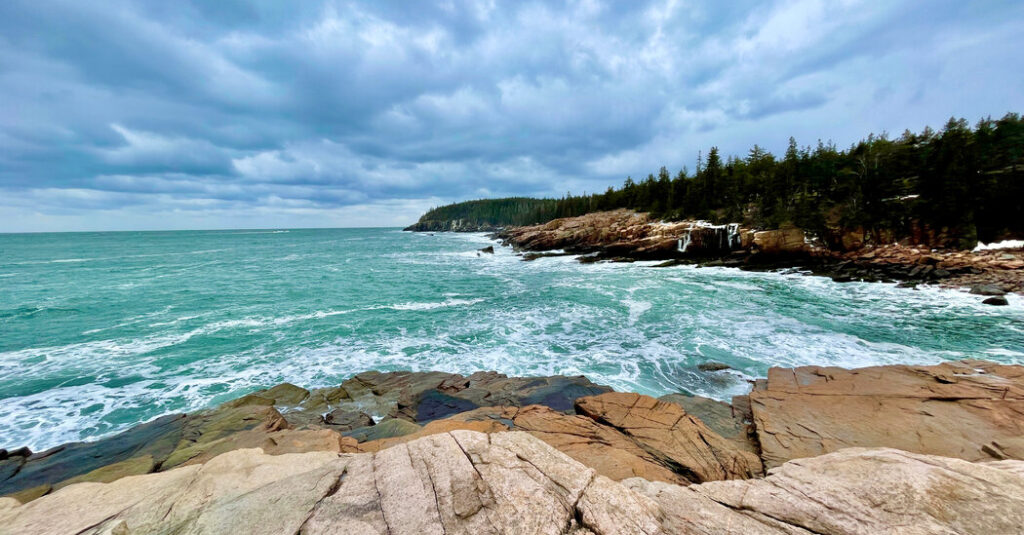In case you haven’t heard, national parks in the United States have been busy in recent years. Record-breaking busy. But one way to enjoy the bounty of a national park without unwelcome company is to get into the backcountry on a day hike.
“In the backcountry, you get away from the crowds and the infrastructure,” said Scott Cundy, co-founder of Wildland Trekking, a company that offers guided hiking and backpacking trips in national parks and around the world. “You can experience the core nature of these places, and really get an understanding of why they were chosen as national parks. ”
Backcountry is a loose term for a remote, undeveloped and sometimes hard-to-reach area. Though national parks, which were established around environmental conservation, often include extensive swaths of backcountry, most park goers visit only the major places and attractions reachable by car or shuttle.
There is an understandable intimidation factor when it comes to backcountry exploration; the deeper you get into the wilderness, the farther you are from help should something go wrong. Opting for a guided trip offers the reassurance of expert support on the trail, but you can still immerse yourself in nature with a backcountry hike on your own.
Preparation is vital. Mr. Cundy suggests doing ample research in advance, both of the terrain you’re hoping to cover and the specific seasonal conditions. That will direct you to the proper clothing — which, ideally, will be moisture-wicking, easily layerable and provide sun protection — as well as any equipment you might need. For longer hikes, consider bringing devices for water filtration and satellite communication, a portable charger for your phone and a first aid kit. Regardless of how much distance you plan to cover, good, thick socks and comfortable, sturdy footwear are essential, and hiking poles can be useful for balance. Talking to (or hiking with) someone experienced in the backcountry is always wise, as is talking to a park ranger before you set off.
“We encourage visitors to plan ahead by checking weather forecasts, carrying plenty of water and salty snacks, wearing adequate sun protection and understanding their physical and medical limitations,” said Joelle Baird, a public affairs officer with Grand Canyon National Park.
Here are five day hikes, of varying lengths and difficulty levels, to explore at some of the most visited national parks. Be sure to check the conditions of specific trails before you hike, including any wildlife concerns, and know that the time to complete the hike will be dependent on the seasonal conditions, the amount of weight you’re carrying and your fitness level.
Maine
Difficult: Easy
Distance: 1.3 miles
This figure-eight trail in Acadia National Park is family-friendly, allows dogs on leashes and is beloved by birders — you may spot eagles, ospreys, great blue herons and more. The trail hugs the park’s distinctive rugged coastline and loops through spruce woods, making for a nice variety of environments to take in. The hike has minimal elevation gain (about 65 feet total) and the first loop is accessible for those with disabilities.
Difficulty: Easy
Distance: 2 miles
A short, family-friendly out-and-back hike that packs a punch with amazing views, the Shoshone Point Trail is a short drive from the Grand Canyon South Rim Visitor Center. Hike a mile through Ponderosa pines to expansive views of the Grand Canyon’s northeastern side, plus a picnic area with pit toilets, benches and grills. The hike has just 130 feet of elevation gain over a gentle incline to the viewpoint. Adventurous hikers can access Shoshone Point itself, a promontory that juts out into the canyon for even more stunning vistas. Be sure to exercise caution as there are no guardrails. There also have been extreme heat warnings at Grand Canyon National Park; if you are going to hike, plan on doing so before 10 a.m. or after 4 p.m.
Colorado
Difficulty: Moderate
Distance: 7.4 miles
The west side of Rocky Mountain National Park is generally quieter that the east side, and is where the Colorado River Trailhead can be found. The hike to Lulu City, the site of an abandoned mining village, follows the upper Colorado River through meadows and wooded areas, with opportunities for spotting wildlife like elk, moose, foxes and coyotes. There are some steep sections, but generally, the elevation gain isn’t too extreme. Be sure to factor the park’s timed entry requirements into your plans, and check specific trail conditions before you go.
Difficulty: Moderate to Difficult
Distance: 8.3 miles
The Middle Prong Trail in the Great Smoky Mountains, the most visited national park in the United States, is an out-and-back trail to Indian Flat Falls, a collection of four waterfalls. The trail itself is a stunner, too, winding along creek banks and, depending on the season, through wildflowers or stunning fall foliage. Expect a total elevation gain of 1,140 feet. Get a taste of the trail without the mileage with a shorter walk to the Lynn Camp Prong, which is just half a mile from the trailhead.
California
Difficulty: Moderate to Difficult
Distance: About 10 miles
Don’t let the distance of this out-and-back hike deter you: This stunning route winds along the Tuolumne River to the roaring Tuolumne Falls, with ample views of Yosemite’s distinctive granite peaks throughout. The trail is largely flat, though it drops steeply down to the falls, requiring a decent climb on the way out (total elevation gain is 1,154 feet). Mid- to late-summer is prime time for wildflowers, and keep an eye out for deer, marmots and sometimes, bears. A reservation is required to drive into the park daily from 5 a.m. to 4 p.m. through Aug. 16 and on Saturdays, Sundays and holidays through Oct. 27.
Follow New York Times Travel on Instagram and sign up for our weekly Travel Dispatch newsletter to get expert tips on traveling smarter and inspiration for your next vacation. Dreaming up a future getaway or just armchair traveling? Check out our 52 Places to Go in 2024.


